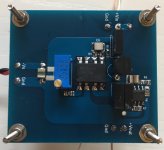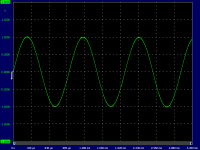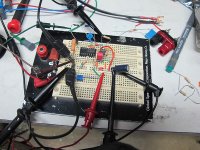If it is only noise, would 6x 2SK372GR in parallel get you somewhere close ?
to 90 pV/rtHz? No, not even close. And, Toshiba deny that they have ever made it.
to 90 pV/rtHz? No, not even close. And, Toshiba deny that they have ever made it.
It is not going well with Toshiba, karma for ditching the good stuff.
If you still want any good discrete analogue devices, this year is probably your last chance to buy lifetime stock.
No one is really doing well with analogue discretes.
NXP is sold / split, so discretes like BF862 are now Chinese.
Toshiba Semicon is most likely to be sold soon, and who knows what the new owner would do.
Fairchild is now On-Semi, so is Sanyo Semi, .....
The list keeps growing.
P.
No one is really doing well with analogue discretes.
NXP is sold / split, so discretes like BF862 are now Chinese.
Toshiba Semicon is most likely to be sold soon, and who knows what the new owner would do.
Fairchild is now On-Semi, so is Sanyo Semi, .....
The list keeps growing.
P.
It is not going well with Toshiba, karma for ditching the good stuff.
I'm still frowning because of 2 external USB3 disk drives.
Did not last for one week.
Last edited:
The Wurcer LNA for P-JFETs is working.
.
Nice work Patrick. You set a high standard.
The Wurcer LNA for P-JFETs is working.
Input signal was 1mV sine.
More tests to come (noise measurements, etc.)
Patrick
.
Good and good luck finding new choices. Even some batches of J310's were not too bad for some applications but nothing P made over the years by usual suspects ever was very good. Those P-channel switches National? made were OK but an unusual exception.
How about the PJFETs in the input stage of the TL072? Could a large area, basket weave layout on that fabrication process, give a low noise discrete if they wanted to try?
Already did, gm/C figure of merit is not that good (50pF Cin for a 2.9nV diff-pair). On some of the new SOI processes things are better but no one is going to make discreet P FET's for fetish style design philosophies. Complimentary symmetry just sounds better, etc.
It appears that Mouser now carries affordable precision resistors, e.g.
http://www.mouser.ch/Passive-Compon...yzmq8c&Keyword=143195597&FS=True&Ntk=P_MarCom
Unfortunately, I could not find a 1R resistors in the series.
Regards,
Braca
http://www.mouser.ch/Passive-Compon...yzmq8c&Keyword=143195597&FS=True&Ntk=P_MarCom
Unfortunately, I could not find a 1R resistors in the series.
Regards,
Braca
Not the neatest setup. Performance in this breadboarded version is flat from 50Hz to 200kHz @60dB, but rises to a peak of 61.5dB ~16Hz. Note the ultra precise probing technique:
Proto-board abuse
Not the neatest setup. Performance in this breadboarded version is flat from 50Hz to 200kHz @60dB, but rises to a peak of 61.5dB ~16Hz. Note the ultra precise probing technique:
Ummmm... this could be "by design". I can't find the exact schematic, but the original Mr. Wurcer design in #1 appears to have 2 poles at LF, one is C2R6 the other is C5-whatever gives the optocoupler (no idea how the freq response and impedance looks like). If these two poles happen to be close in frequency, when you close the loop the LF response may overshoot. You need a zero to compensate the second pole, a resistor in series with C2 will do.
P.S. The closer the poles are, the higher the overshoot. 1.5dB as reported is not that bad, you can leave it as it is and happily live ever after.
Last edited:
there you go again scott, giving away those high end design secrets!


mlloyd1
mlloyd1
Proto-board abuseEveryone needs to learn how to design circuits that are immune to being made on these plug-in boards.
- Home
- Design & Build
- Equipment & Tools
- My version of the G = 1000 low noise measurement amp (for Ikoflexer)


